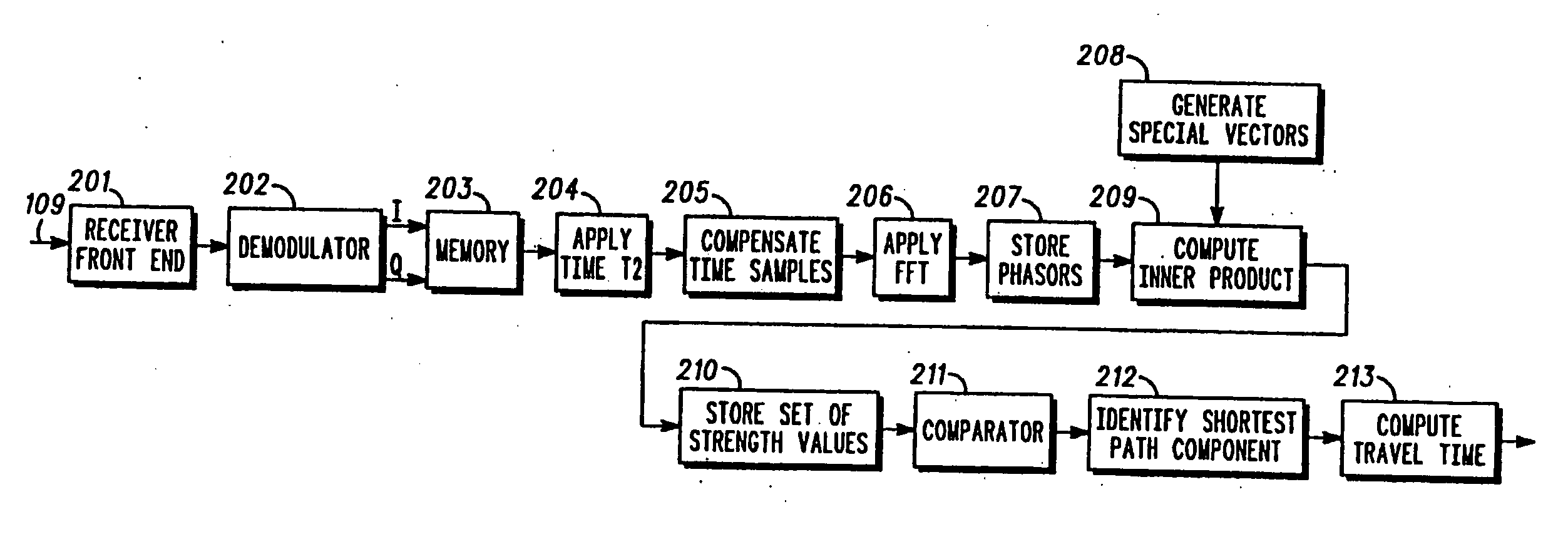Measuring distance using wireless communication
- Summary
- Abstract
- Description
- Claims
- Application Information
AI Technical Summary
Benefits of technology
Problems solved by technology
Method used
Image
Examples
Embodiment Construction
[0047] OFDM, as used in embodiments of the invention, is a known modulation form that subdivides the communication channel into N sub-channels. These sub-channels are centred around sub-carriers. Data is transmitted in OFDM by modulating all sub-carriers using modulations such as 4QAM, 16QAM and 64QAM (where ‘QAM’ is Quadrature Amplitude Modulation). All sub-carriers are transmitted simultaneously
[0048] Prior to any data transmission in an OFDM LAN system in accordance with the 802.11 standard, a training sequence is sent by the transmitter to properly synchronize the receiver in time and in frequency. At the beginning of a transmission, the RU transmits an OFDM RF burst known as the ‘Long Training Sequence’, whose purpose is to allow the AP to synchronize. The Long Training Sequence consists of N sub-carriers in the frequency domain (N=52 in 802.11a) equally spaced in frequency in the vicinity of the carrier (around 5 GHz). Each sub-carrier has the same amplitude but a different p...
PUM
 Login to View More
Login to View More Abstract
Description
Claims
Application Information
 Login to View More
Login to View More - R&D
- Intellectual Property
- Life Sciences
- Materials
- Tech Scout
- Unparalleled Data Quality
- Higher Quality Content
- 60% Fewer Hallucinations
Browse by: Latest US Patents, China's latest patents, Technical Efficacy Thesaurus, Application Domain, Technology Topic, Popular Technical Reports.
© 2025 PatSnap. All rights reserved.Legal|Privacy policy|Modern Slavery Act Transparency Statement|Sitemap|About US| Contact US: help@patsnap.com



